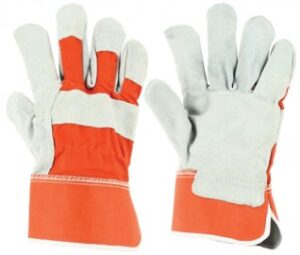Note to the buyer of protective gloves

Selection, use and care of protective seals
 This information contains a summary of short rules for the selection, use and care of protective gloves, as well as for their disposal. This information is accompanied by important information regarding regulations, standards and CE marking (compliance of products with European safety standards) related to gloves.
This information contains a summary of short rules for the selection, use and care of protective gloves, as well as for their disposal. This information is accompanied by important information regarding regulations, standards and CE marking (compliance of products with European safety standards) related to gloves.
Selection of gloves
- Hazard and risk assessment;
- Determination of protection requirements;
- Selection of protective gloves.
1. Hazard and risk assessment
Sharp objects that can cause cuts are included in the list of the most common causes of hand injuries. Mechanical exposure in the form of cuts, wounds, or stabbing scratches are often common hazards to consider, in addition to exposure to chemicals, high or low temperatures on the hands. Working with hot objects or liquids, welding or being exposed to metal spatter and heat radiation can cause serious burns.
The safety data sheet contains data on the dangers of working with chemicals.
Exposure to chemicals can have dangerous consequences:
for internal organs when penetrating through the skin; for the skin due to erosive effects and hypersensitivity (sensitization); cancer with impaired reproductive capacity and damage to the genetic fund.
Working at extremely low temperatures with cryogenic (liquid) gases can lead to frostbite. Electrostatic discharges, radioactive radiation, and biological hazards are other factors that can lead to injury.Examples of risks associated with gloves:
1) wrong choice of protective gloves;
2) skin irritation, allergic reaction;
3) poor hygiene;
4) incorrect size selection;
5) improper use of protective gloves;
6) contamination of protective gloves;
7) damage to protective gloves;
8) Old protective gloves.
2. Definition of protection requirements
The protection requirements are determined on the basis of the technical requirements for the gloves used.
Technical requirements are developed in accordance with the following stages:
- quantitative expression of risks;
- determining which part of the forearm / hand needs protection;
- determination of the level of protection based on the relevant standard.
3. Selection of protective gloves
The properties of the glove material are a decisive factor in meeting the conditions of protection. Accordingly, the test results of the material according to the standard are the most important factor in choosing the right protective gloves.
Other important factors determining suitability are:
- good fit (thanks to the right size and design);
- tactile properties (ability to feel objects);
- mobility (manipulation abilities);
- comfort (sweating hands, etc.).
Accordingly, when choosing the right protective gloves, you should be guided by their resistance:
– to abrasion, cuts and punctures;
– To the cold;
- to heat;
– to relevant chemicals, electrostatic discharges, radioactive radiation or microorganisms.
Use of protective gloves
State authorities set various requirements for employers and employees regarding the use of personal protective equipment. Protective gloves belong to personal protective equipment that must be provided by the employer. The employee must follow the established instructions on the use of protective gloves. The employer must ensure that the employee receives information on the risks and use of personal protective equipment, as well as on the timing of their replacement. In addition, workers must know how to handle used gloves.
Care of gloves
If protective gloves are to be reused, they should be checked for integrity, cleanliness, and ensure that they have lost their protective properties. The instructions for the consumer indicate whether the gloves are to be cleaned, how the gloves are cleaned, dried and stored. Gloves must be cleaned from the inside. If gloves have been used while working with harmful chemicals, they must all be disposed of at the end of the workday. Gloves should be stored properly to maintain their protective properties. Certain materials, including manufactured gloves (rubber), have a limited shelf life.
Application after use
If gloves were used to work with harmful chemicals, special environmental regulations apply. Certain gloves may contain materials that may be environmentally harmful.














